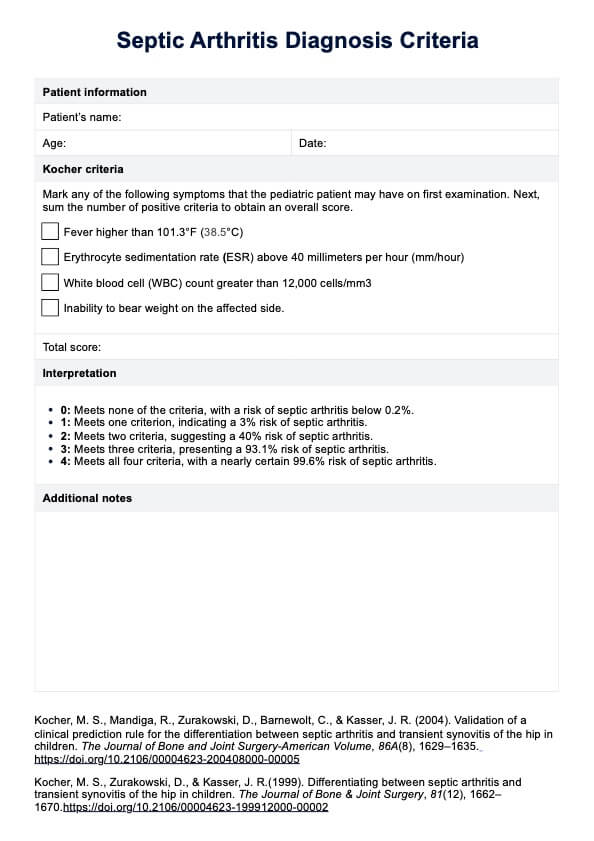Septic arthritis is diagnosed through a combination of clinical evaluation and diagnostic tests. Key procedures include arthrocentesis to analyze joint fluid, blood tests to check for infection, and physical examination to assess joint swelling and pain.

Septic Arthritis Diagnosis Criteria
Learn about the diagnosis criteria for septic arthritis in children. Download Carepatron's free PDF for comprehensive information.
Septic Arthritis Diagnosis Criteria Template
Commonly asked questions
According to the Kocher criteria, a fever higher than 101.3°F (38.5°C), an erythrocyte sedimentation rate (ESR) above 40 millimeters per hour (mm/hour), a white blood cell (WBC) counts greater than 12,000 cells/mm3, and an inability to bear weight on the affected side are key indicators.
The gold standard for diagnosing septic arthritis is the analysis of synovial fluid obtained through arthrocentesis. This procedure allows for the identification of pathogens and the assessment of joint inflammation and infection.
EHR and practice management software
Get started for free
*No credit card required
Free
$0/usd
Unlimited clients
Telehealth
1GB of storage
Client portal text
Automated billing and online payments











